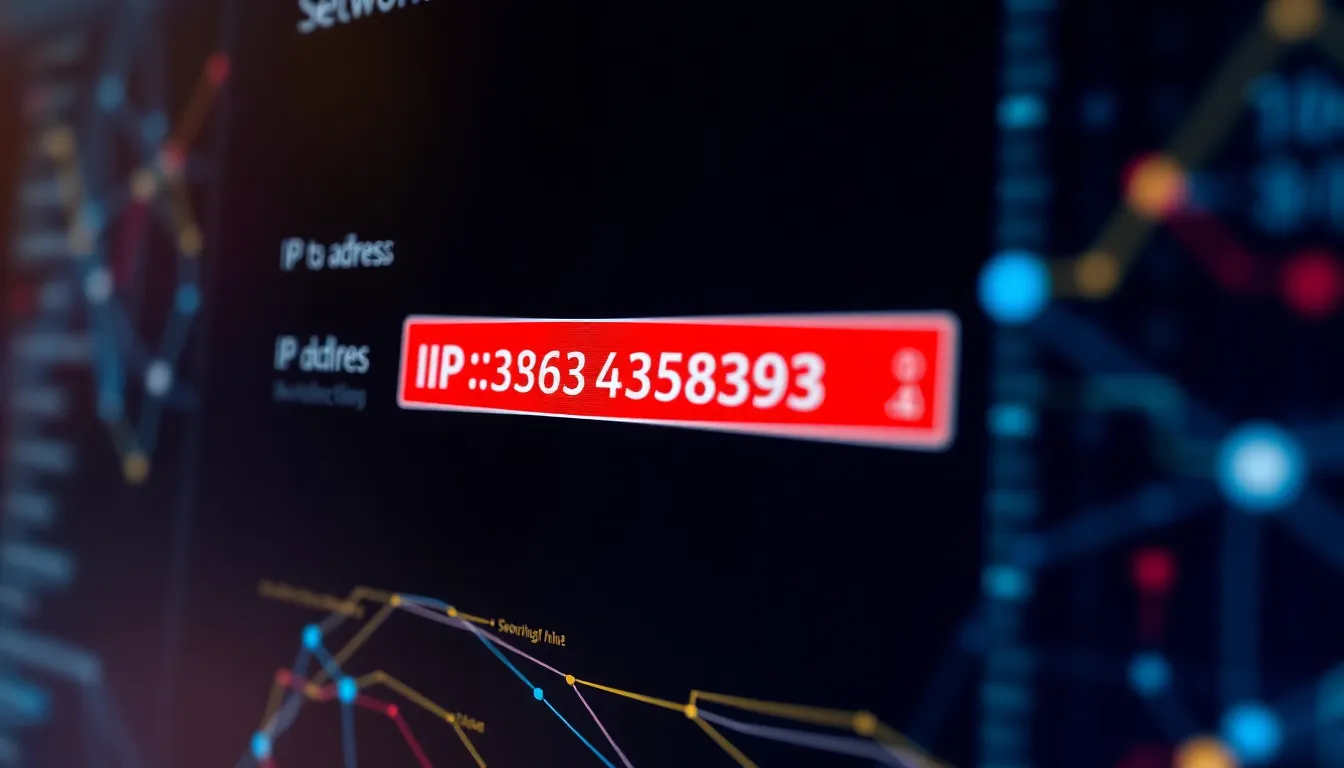In the vast universe of IP addresses, 125.16.12.1100 stands out like a quirky neighbor with a pet llama. While most IPs are just a series of numbers, this one has sparked curiosity and confusion alike. What’s behind this seemingly random string? Is it the secret lair of a tech genius or just another digital breadcrumb?
Table of Contents
ToggleOverview of 125.16.12.1100
125.16.12.1100 stands out as an atypical IP address in the digital landscape. This address doesn’t conform to the standard structure of typical IPv4 addresses, which usually feature a maximum of four segments, each ranging from 0 to 255. The final segment here, “1100,” exceeds the allowed range, indicating a potential error or misconfiguration.
Organizations frequently allocate IP addresses in specific blocks. Network administrators often track these addresses to ensure efficient routing and communication. Given its irregularity, 125.16.12.1100 raises questions about its origination and usage. Such anomalies in IP addressing can disrupt network integrity and complicate diagnostics.
The curiosity surrounding 125.16.12.1100 stems from its mystery. It invites speculation about whether this address serves a unique purpose within a specialized network or has simply emerged from a generative error in an IP management system. It’s critical to note that proper IP allocation practices mitigate the risks associated with errant addresses.
Historically, the misuse of IP addresses has led to significant issues, including security vulnerabilities and misrouted traffic. In the realm of network security, vigilance is essential to prevent unauthorized access and protect sensitive data. Cybersecurity professionals emphasize regular audits of IP allocations to identify and rectify such anomalies promptly.
Technical teams frequently utilize network monitoring tools to scout for irregular addresses like 125.16.12.1100. These tools aid in maintaining network robustness, ensuring that digital environments remain secure and operational. The conversation surrounding anomalous IP addresses serves as a reminder of the importance of diligence in network management.
Features of 125.16.12.1100

The peculiar IP address 125.16.12.1100 presents unique features that merit discussion. An examination of its structure reveals deviations from typical IPv4 formatting, especially with the unconventional last segment.
User Interface
User interface issues often arise in relation to this IP address. Dashboard presentations for devices linked to it may display anomalies. Detection of the irregular last segment could result in challenges when accessing network tools. Visual feedback in system logs may also lack clarity, complicating user navigation. Control panels might not properly reflect connection status as they typically would for standard addresses. Users can face difficulties when attempting to configure settings related to this address without reliable data.
Functional Capabilities
Functional capabilities connected to 125.16.12.1100 seem limited due to its unusual format. Network routing may encounter significant challenges, affecting overall performance metrics. Devices may struggle with consistent connectivity, leading to higher latency rates. Packet loss shows a tendency to increase when interacting with other addresses. Security protocols designed to filter anomalous addresses often flag this one as suspicious. Consequently, this impacts the network’s reliability and efficiency, leading to complications in diagnostics.
Performance Analysis
Performance aspects of the IP address 125.16.12.1100 raise significant concerns. Given its unconventional structure, speed and reliability become problematic factors.
Speed and Reliability
Connectivity often suffers with this specific IP address. Latency rates regularly increase due to its unique composition. Users frequently experience delays during data transfer processes. Such delays can degrade overall network performance, especially during high-demand periods. Anomalies in response times occur, negatively impacting real-time applications. Network professionals note that unreliable connections ultimately lead to frustration among users.
Compatibility with Devices
Devices connected to 125.16.12.1100 encounter compatibility challenges. Many network devices can struggle to recognize or communicate effectively with this IP address. Variability in firmware across different devices can exacerbate these issues. Users find that specific dashboards may fail to display correctly, complicating configuration. Incompatibility frequently results in miscommunication between devices, hindering overall functionality. Consequently, maintaining optimal network performance proves difficult for those relying on this address.
Pros and Cons of 125.16.12.1100
The IP address 125.16.12.1100 presents a mix of advantages and disadvantages that impact its use in network environments.
Advantages
One advantage of 125.16.12.1100 lies in its uniqueness. This uniqueness can serve as a point of curiosity for network engineers interested in troubleshooting and anomaly detection. Some network monitoring tools may flag this address, alerting administrators to potential security threats. Enhanced scrutiny can lead to improved network security when anomalies are identified early. Additionally, the experience gained from addressing such challenges can bolster professional skills in cybersecurity and network management.
Disadvantages
Numerous drawbacks accompany 125.16.12.1100. Most notably, it lacks standard compliance, raising compatibility issues across devices. Increased latency rates can hinder performance, especially during high-demand usage. User interfaces may struggle to present data clearly, leading to navigation problems. Many devices experience difficulty interacting with this unconventional address, complicating configuration. Persistent connectivity challenges further diminish overall network reliability, leading to frustration for users relying on stable connections.
The peculiar IP address 125.16.12.1100 serves as a reminder of the complexities within digital networks. Its unconventional structure raises important questions about network integrity and proper IP allocation. While it may offer some insights for network engineers, the challenges it presents cannot be overlooked.
From increased latency to compatibility issues, this address exemplifies the potential pitfalls of digital anomalies. Those managing networks must remain vigilant in identifying and addressing such irregularities to ensure optimal performance and security. As technology continues to evolve, understanding these quirks will be essential for maintaining a reliable digital environment.



